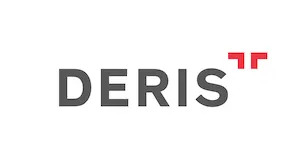The Turkish Industrial Property Code no. 6769 (IP Code) grants protection through registration for the appearance of a product or a part thereof.
According to the IP Code, the protection is applied to the appearance of the whole or a part of a product or its ornamentation resulting from features such as lines, shape, form, color, material or surface texture that fulfill the novelty and individual character criteria. In other words, designs which lack novelty and individual character do not fulfill protection requirements.
The requirement for novelty acknowledges that no identical design should have been made available to the public anywhere in the world before the date of reference.
The assessment of the individual character however, differs from the novelty examination carried out by the Turkish Patent and Trademark Office ("Turkish PTO").
A design is accepted to have an individual character if the overall impression of a new design could be distinguished by an "informed user" from a prior design made available to the public. In the event that the "informed user" evaluates the overall impression of a new design as being different from a design previously made available to the public, the latter design would be accepted as eligible for design protection.
The "informed user" statement in which the Turkish PTO uses in its recent Design Examination Guide ("Guide") published on July 01, 2019 with a clear reference to CJEU decision no. C-281/10 P reveals that the recent Guide was prepared in light of the EUIPO practice.
In other words, Turkish PTO's individual character examination is to be carried out by following the EUIPO practice, through the distinguishability of that design by an "informed user" from all other known forms exposed via previous designs. Parallel to the CJEU decision, the "informed user" was indicated as the person who is placed between the "average consumer" making a comparison between trademarks without any special knowledge and an expert having technical information as to the relevant sector.
The CJEU decision no. C-281/10 P was the first design conflict where the concept of the "informed user" was discussed and interpreted at falling between the "average consumer" concept applicable for trademark similarity examinations and an expert from the relevant sector. Therefore, it could be evaluated that the "informed user" is to be more attentive than an average consumer who is not an expert in the relevant sector and as having the ability to make a direct comparison between the designs in question.
Considering the Turkish Supreme Court approach in the recent years, the "informed user" was also evaluated in line with the above as a more attentive individual than a general consumer having used the designs either by personal experience or knowledge and being less than an expert in the relevant field, the CJEU precedent has clear effect as to the concept of the "informed user".
Therefore, it is to be taken into account that the precedents reflecting the EUIPO practice to be used during the filing of third party oppositions before the Turkish PTO can play a highly suggestive role as to the determination of the individual character of the design to be protected.
Consequently, the third party opposition mechanism especially to be based on lack of distinctiveness would precisely reduce the risk of competitors using products which would not be distinguished from one another, resulting to unjust profiting thereof.
Otherwise, registration certificates obtained under false merits and which could easily be invalidated would open the path for unfair complications and long lasting legal actions.
Comment:
It is a fact that the reliability of examination on registrability of a design to be protected before the Turkish PTO would hold great importance in terms of the future of infringement and invalidity actions to be instituted.
In the most classic sense, the protection to be provided to novel and distinctive designs would result to a competitive environment and development for the industry and designs which lack these features should not benefit from such protection.
As a result, pursuant to recent implementations of the Turkish PTO since the IP Code entered into force in January 2017, it is apparent that the Turkish PTO is embracing to follow the EUIPO practice more closely in terms of granting design protection.
The content of this article is intended to provide a general guide to the subject matter. Specialist advice should be sought about your specific circumstances.

